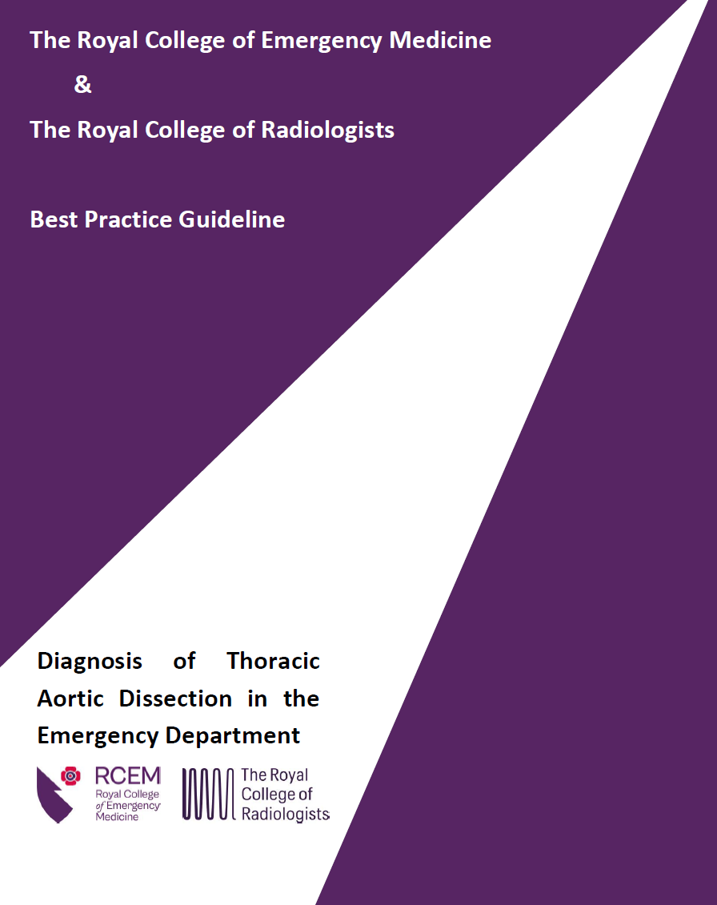Diagnosis of thoracic aortic dissection in the emergency department
Date: 2024
Date of next review: 2027
The diagnosis of thoracic aortic dissection (TAD) is often difficult to establish in emergency department (ED) patients attending with chest pain. Key to making the diagnosis is the awareness among emergency physicians (EPs) of the need to consider the diagnosis in patients presenting with chest pain. EPs should also have an awareness that TAD can present subtly or in young patients and that their pain may have migrated or dissipated by the time they are seen. Surveillance data suggest that opportunities to diagnose cases of TAD are being missed in the ED, often with catastrophic consequences. This guideline seeks to provide a consensus opinion with regard to which patients should be considered for CT scanning (the diagnostic modality of choice) while accepting that this is still an area of considerable controversy and concern.
This guidance is a produced jointly between the Royal College of Radiologists and the Royal College of Emergency Medicine.
Summary of recommendations
- All clinicians working in the ED should be made aware of the difficulties in excluding the diagnosis of TAD and the need to be aware of local policies and resources to assist in this as part of their induction.
- Each ED must have agreed protocols between themselves and their radiology department regarding requests for CT Aortograms in cases of suspected thoracic aortic dissection.
- Thoracic aortic dissection is a time-critical emergency and provision must be available for the ED to rapidly access CT Aortograms throughout the whole 24-hour period.
- If the ED suspects a patient has a TAD it is the role of the ED to request the scan and act on the result. This responsibility should not be passed onto another clinical team.
- All emergency departments should have a local protocol or pathway detailing the actions to be taken once a diagnosis of TAD has been made. This should include details of blood pressure management and local urgent referral pathways to specialist surgical centres, where appropriate.
